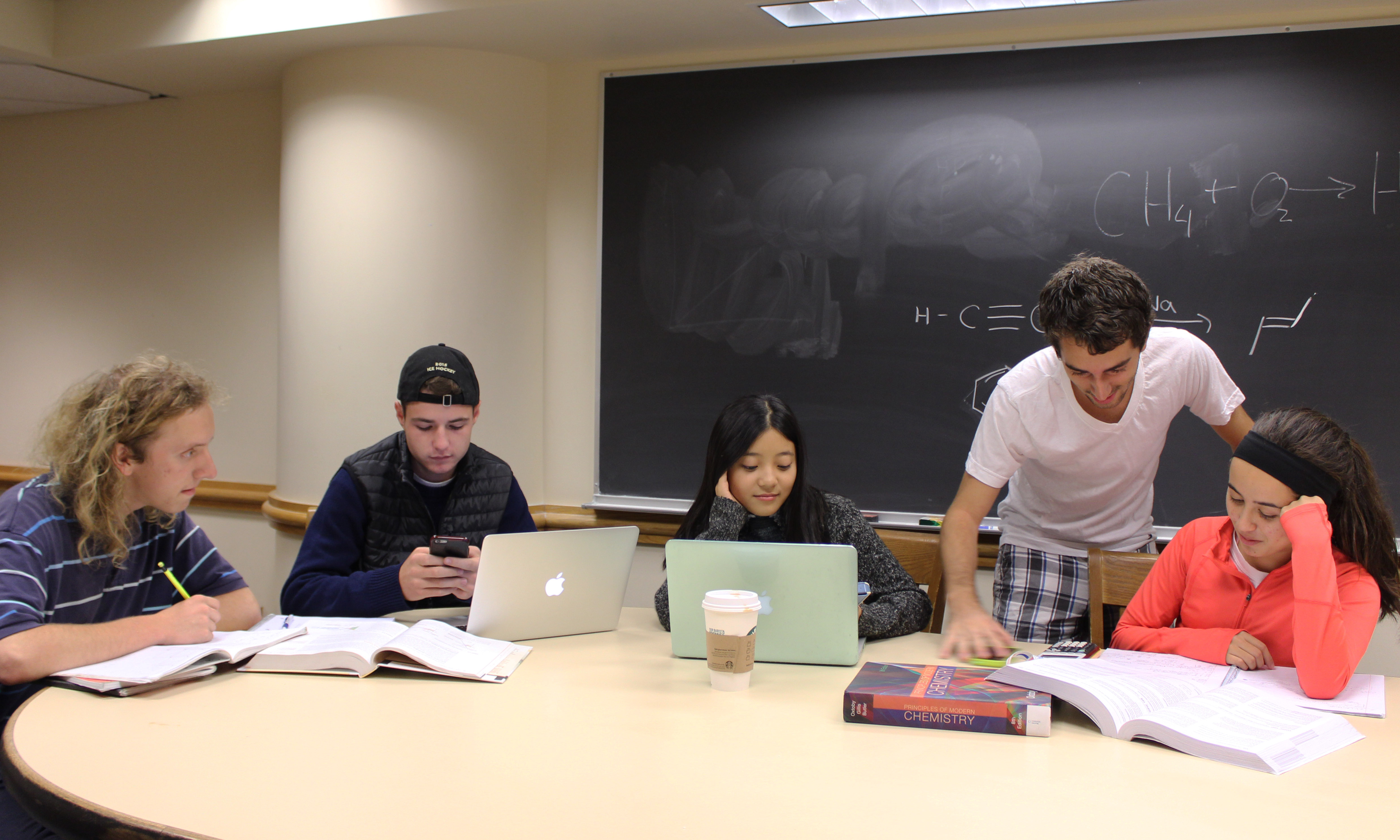
Last year, the Chemistry Department experimented not only with molecules and reactions but also with pedagogical techniques.
For the first time, CHEM 220 “Organic Chemistry” “flipped” its class structure: readings and supplementary videos were done at home, while traditional homework was completed in the classroom. But this semester, the department reverted back to a traditional classroom structure — not necessarily because the flipped classroom was a failure, chemistry professor Timothy Newhouse said, but because the department cannot yet tell how the structure affected students’ retention of the course material. Newhouse, who spearheaded the change, explained that the department is waiting for more data to determine the program’s success.
“[Last year’s CHEM 220 students] are continuing on in chemistry this semester, and after this semester [professors] will have a better idea of how the flipped class worked,” he said, adding that the department “needs to develop other metrics [other than test scores] to evaluate the success of a flipped course.”
The Chemistry Department’s experiment with the flipped classroom is part of a national push toward the educational model. Recent technological advancements have put this type of learning in a spotlight unlike ever before, according to a paper released by the University of Northern Iowa in May 2014, in which flipped learning was also described as “industrialized education.”
While flipped learning can take various forms, CHEM 220 assigned its students both optional videos and required reading for homework. Class time was devoted to reviewing, practicing and expanding upon the material learned at home. In class, students were given the opportunity to ask clarification questions and to learn about practical applications of the concepts they had studied.
Though Newhouse said that overall, course evaluations were good, students interviewed expressed mixed opinions.
“I personally don’t like using videos to study. I like the [traditional] class structure because it gives students a chance to stop the professor and ask clarification questions. You can’t ask questions when watching videos,” Anna Merkuryev ’18, who took the flipped chemistry class last year, said.
Matthew Wrocklage ’18 also cited students’ inability to ask questions while learning concepts as a major flaw in the flipped classroom technique. The structure made it easy for him to feel like he was falling behind when he had difficulty understanding a concept, he added.
“The flipped classroom was very effective at increasing engagement and interaction between the students and the professor and TAs,” Steven Lewis ’18 said.
While some students disliked the flipped structure, several studies evaluating the pedagogical technique have yielded favorable conclusions. In 2013, Pearson Education Inc. — a national education provider — found that students scored between 9 and 19 percentage points higher across the core subjects of math, English, social studies, science and writing when they learned in a flipped classroom. The study also found a 32-percentage-point increase in student scores in math classes. The University of Waterloo, the Center for Digital Education and York University have also found a statistically significant relationship between flipped classrooms and improved student retention of class material.
Still, other studies have found lower improvement rates, or even concluded that there is no statistically significant relationship between a flipped structure and test scores.
Newhouse said that studies like Pearson’s contributed to the Chemistry Department’s decision to make the change last year. He added that many physics and math classes at Yale have long seen success with the flipped structure, but these successes do not necessarily apply in every academic setting.
As of Sept. 17, 113 students are enrolled in CHEM 220 this semester.







